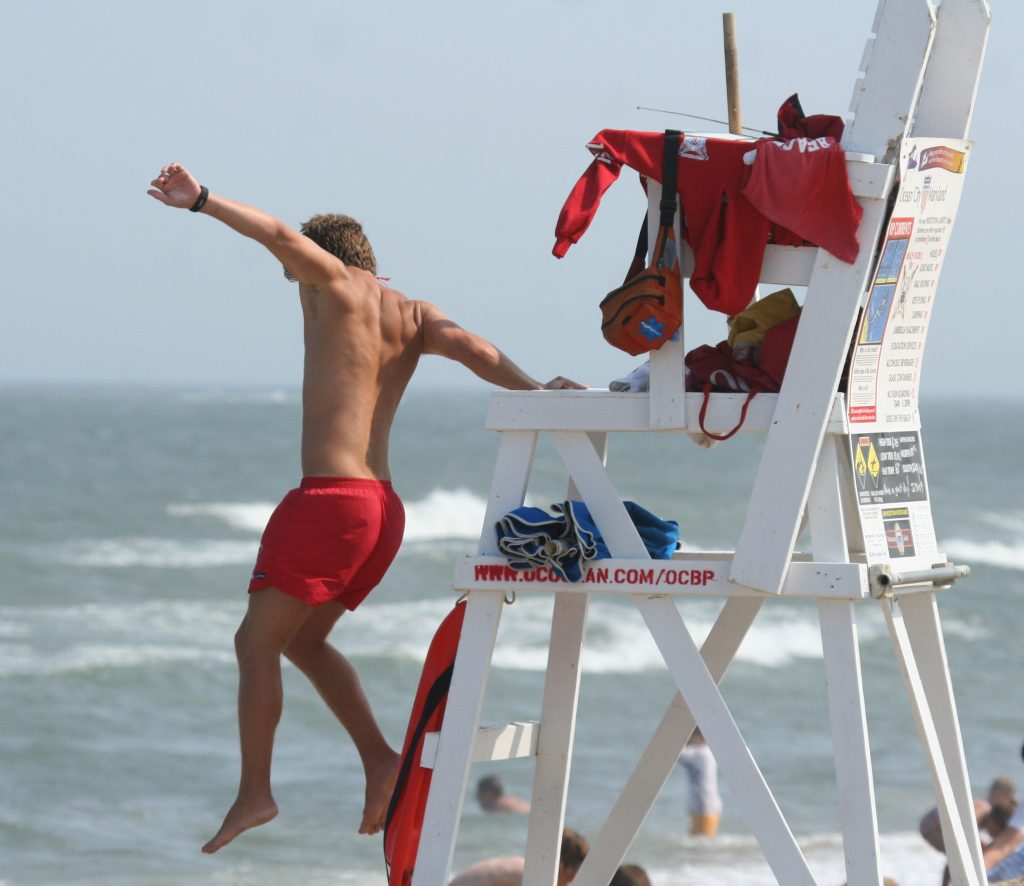How can lifeguards best recover… resting, running, or foam rolling?
 A lifeguard’s job can be physically challenging because a lifeguard needs to react as fast as possible to initiate a rescue. Some studies have shown that lifeguards need approximately 5 minutes to rescue a victim who is 75-100 meters from shore. This is an exhausting task which results in very high blood lactate concentrations. Thus, the recovery after a water rescue is important for the lifeguard to be able to perform a consequent rescue.
A lifeguard’s job can be physically challenging because a lifeguard needs to react as fast as possible to initiate a rescue. Some studies have shown that lifeguards need approximately 5 minutes to rescue a victim who is 75-100 meters from shore. This is an exhausting task which results in very high blood lactate concentrations. Thus, the recovery after a water rescue is important for the lifeguard to be able to perform a consequent rescue.
Research Study
A group from Spain conducted a research study designed to test the effectiveness of two active recovery methods, foam rolling and running, compared with passive seated rest/recovery, on the blood lactate clearance after performing a water rescue. Twelve lifeguards (mean age 25 years) from Marín, Pontevedra, in Spain completed the study. The participants performed a simulated water rescue consisting of running 10 meters to the water, swimming 100 meters with fins to the victim, gaining control of the unconscious victim, towing the victim 100 meters back to shore, and extracting the victim to dry sand.
After the participants had finished the water rescue, blood lactate level and rate of perceived exhaustion were collected immediately. Thereafter the participants were instructed to directly take off their wetsuit and start their respective recovery protocol. The total time of recovery (between measurements of lactate levels) was 25 minutes.
Recovery Protocols
 The running recovery protocol consisted of 4 minutes of taking off the wet suit while walking, 16 minutes of running at a pace of proximately 60% of the participant’s VO2max, and ending with 5 minutes of walking.
The running recovery protocol consisted of 4 minutes of taking off the wet suit while walking, 16 minutes of running at a pace of proximately 60% of the participant’s VO2max, and ending with 5 minutes of walking.
The foam rolling protocol consisted of five minutes spent removing the wet suit followed by foam rolling exercises for the quadriceps, iliotibial band, hamstrings, adductors, and gluteal muscles. Each exercise was performed for 1 minute on each leg; after finishing all the exercises, the sequence was repeated, with a final active time of 20 minutes.
The passive rest recovery consisted of seated rest for approximately 20 minutes after having removed the wetsuit.
Results
The average baseline (pre-exercise) lactate level was 2.7 ± 0.9 mmol/l and rose to 10.1 ± 2.1 mmol/l after the water rescues. The post recovery blood lactate levels were significantly lower for running (4.9±2.3mmol/l) and foam rolling (4.4±1.5mmol/l) compared with resting (7.2±2.5mmol/l). There was no significant statistical difference between foam rolling and running. From a practical point of view, running and foam rolling are also appropriate recovery methods for lifeguards because they do not interfere with the surveillance aspect of their job.
The authors concluded that after 25 minutes, lifeguards clear out blood lactate more efficiently when performing an active recovery protocol (50% clearance) compared to performing a passive resting protocol (30% clearance).
Applications
The broader implications from this study are that after any strenuous exercise, active recovery methods are likely more efficient at clearing blood lactate levels and allowing the athlete to continue exercising than simply resting. Further, both running and foam rolling have additional benefits for one’s health that recommend them as the recovery protocols of choice.
This blog post article was created in collaboration with www.TerraRosa.com.au.


